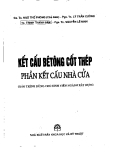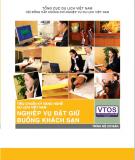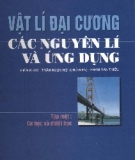Tài liệu Thư viện số
- Công nghệ thông tin (2019 )
- Điện tử viễn thông (1133 )
- Quản trị kinh doanh (1305 )
- Kế toán (1003 )
- Môi trường (968 )
- Du lịch (861 )
- Kiến trúc (424 )
- Xây dựng (1082 )
- Ngoại ngữ (302 )
- Y dược (1391 )
- Khoa học tự nhiên (874 )
- Khoa học xã hội (514 )
- Lý luận chính trị (573 )
- Sau đại học (243 )
- Tài liệu tham khảo khác (252 )
Danh mục TaiLieu.VN
- Mẫu Slide Powerpoint
- Luận Văn - Báo Cáo (344720)
- Kinh Doanh Marketing (65512)
- Kinh Tế - Quản Lý (48934)
- Tài Chính - Ngân Hàng (55898)
- Công Nghệ Thông Tin (142209)
- Tiếng Anh - Ngoại Ngữ (47066)
- Kỹ Thuật - Công Nghệ (134345)
- Khoa Học Tự Nhiên (107174)
- Khoa Học Xã Hội (82451)
- Văn Hoá - Nghệ Thuật (54408)
- Y Tế - Sức Khoẻ (173915)
- Nông - Lâm - Ngư (62504)
- Kỹ Năng Mềm (29016)
- Biểu Mẫu - Văn Bản (27610)
- Giải Trí - Thư Giãn (51994)
- Văn Bản Luật (198854)
- Tài Liệu Phổ Thông (402015)
- Trắc Nghiệm Online (213578)
- Trắc Nghiệm MBTI
- Trắc Nghiệm Holland
Tài liệu nổi bật
Kết quả 10081-10092 trong khoảng 12960
-
Software delelopment enviroments - Unified Modeling language - ULM - Logical view
An object is a concept, abstraction, or thing with sharp boundaries and meaning for an application An object is something that has: State Behavior Identity The state of an object is one of the possible conditions in which an object may exist The state of an object normally changes over time The state of an object is usually implemented by a set of properties (called attributes), with the values of the properties, plus the links the...
40 p dtu 19/10/2012 154 1
-
Software delelopment enviroments - Unified Modeling language - ULM - System behavoir
System behavior is how a system acts and reacts The outwardly visible and testable activity of a system System behavior is captured in use cases They describe the system, its environment, and the relationship between the system and its environment
50 p dtu 19/10/2012 190 2
-
Software delelopment enviroments - Unified Modeling Language - ULM - Fundamentals
Executable UML models for a Shlaer-Mellor/Executable UML toolset with the ability to: graphically create Shlaer-Mellor and/or Executable UML models, verify the models prior to translation, translate the models into a lower-level software language, configuration management of the models, platform-specific project creation and management, and automated document creation. Each subject matter will be contained in it's own (sub)project.
36 p dtu 19/10/2012 201 2
-
Software delelopment enviroments - Object-oriented methods in software engineering
Executable UML models for a Shlaer-Mellor/Executable UML toolset with the ability to: graphically create Shlaer-Mellor and/or Executable UML models, verify the models prior to translation, translate the models into a lower-level software language, configuration management of the models, platform-specific project creation and management, and automated document creation. Each subject matter will be contained in it's own (sub)project.
13 p dtu 19/10/2012 257 2
-
Software delelopment enviroments - An overview to SDE
Learn how to move to UML for current users of the Booch/OMT/Objectory methods * Provides numerous real-world examples and a complete case study that walks you through the project life cycle-analysis, design, and construction * Includes CD-ROM with Rational Rose(r) 4.0 demo, analysis and design models in UML, and Java(TM) code HANS-ERIK ERIKSSON AND MAGNUS PENKER Quickly acquire the knowledge and skills you need to make the most of this...
24 p dtu 19/10/2012 188 2
-
Software delelopment enviroments - Course Overview
One strength here is that the authors show Java-based examples of wht the UML notations really mean. That has always caused difficulty for beginners - which Java language constructs are the 'right' representations of UML specifications? The answer has ambiguities, but the authors show some ways to create a proper correspondence. The later parts of the book describe successively higher levels of system representation, as supported by the...
10 p dtu 19/10/2012 208 2
-
Trí tuệ nhân tạo (hay AI: Artificial Intelligence), là nỗ lực tìm hiểu những yếu tố trí tuệ. Lý do khác để nghiên cứu lĩnh vực này là cách để ta tự tìm hiểu bản thân chúng ta. Không giống triết học và tâm lý học, hai khoa học liên quan đến trí tuệ, còn AI cố gắng thiết lập các các yếu tố trí tuệ cũng như tìm biết về chúng. Lý do khác để nghiên...
171 p dtu 19/10/2012 187 11
-
Trí tuệ nhân tạo hay trí thông minh nhân tạo (tiếng Anh: artificial intelligence hay machine intelligence, thường được viết tắt là AI) là trí tuệ được biểu diễn bởi bất cứ một hệ thống nhân tạo nào. Thuật ngữ này thường dùng để nói đến các máy tính có mục đích không nhất định và ngành khoa học nghiên cứu về các lý thuyết và ứng dụng của trí...
81 p dtu 19/10/2012 239 5
-
Học máy, có tài liệu gọi là Máy học, (tiếng Anh: machine learning) là một lĩnh vực của trí tuệ nhân tạo liên quan đến việc phát triển các kĩ thuật cho phép các máy tính có thể "học". Cụ thể hơn, học máy là một phương pháp để tạo ra các chương trình máy tính bằng việc phân tích các tập dữ liệu. Học máy có liên quan lớn đến thống kê, vì cả...
40 p dtu 19/10/2012 197 6
-
Trí tuệ nhân tạo - suy luận tự động
TTNT mạnh hay TTNT yếu, đó vẫn là một chủ đề tranh luận nóng hổi của các nhà triết học TTNT. Nó liên quan tới philosophy of mind và mind-body problem. Đáng chú ý nhất là Roger Penrose trong tác phẩm The Emperor's New Mind và John Searle với thí nghiệm tư duy trong cuốn Chinese room (Căn phòng tiếng Trung) khẳng định rằng các hệ thống logic hình thức không thể đạt...
19 p dtu 19/10/2012 201 4
-
Trí tuệ nhân tạo - Suy luận với thông tin không chắc chắn hoặc không đầy đủ
Trong các thập niên 1960 và 1970, Joel Moses biểu diễn sức mạnh của suy diễn ký hiệu trong việc tích hợp các bài toán trong chương trình Macsyma, chương trình toán học sử dụng cơ sở tri thức đầu tiên thành công. Marvin Minsky và Seymour Papert xuất bản Perceptrons, trong đó chứng minh các giới hạn của các mạng nơ-ron đơn giản, và Alain Colmerauer phát triển ngôn...
36 p dtu 19/10/2012 195 4
-
Trí tuệ nhân tạo - hệ chuyên gia
Đầu thế kỷ 17, René Descartes đã đưa ra quan điểm rằng cơ thể của động vật chỉ là các cỗ máy tinh xảo. Năm 1642 Blaise Pascal chế tạo chiếc máy tính cơ học đầu tiên. Charles Babbage và Ada Lovelace đã nghiên cứu về các máy tính cơ học có khả năng lập trình được. Bertrand Russell và Alfred North Whitehead đã xuất bản cuốn Principia Mathematica, trong đó...
21 p dtu 19/10/2012 183 5

























